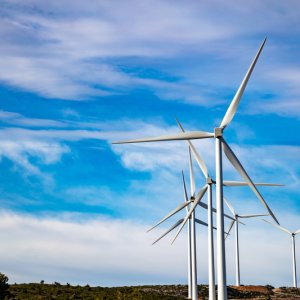
Highlights of the Mexican Wind Energy Industry
The Mexican wind industry essentially drew its first breath when a group of developers in Oaxaca noted that the legal and regulatory framework was not ready for renewable energies. From this stemmed a process of lobbying the federal government to begin truly considering Mexico’s wind energy potential and to make the needed changes. “Those changes in the legal and regulatory framework coupled with increasing competitiveness of wind technology gave rise to the first large scale wind projects, starting with CFE’s La Venta II in 2006,” says Leopoldo Rodríguez Olivé, Renewable Energy Manager for Peñoles and the former President of the Mexican Wind Energy association (AMDEE). The development of wind projects in Oaxaca also benefited from the Open Season scheme, which helped to address the serious constraints that the wind sector was facing concerning transmission infrastructure. For a long time, the wind energy industry essentially only existed in Oaxaca. The state is considered to have one of the best wind resources in the world, particularly in the Isthmus of Tehuantepec, but transmission challenges and overcrowding hinder its future. New technologies have transformed states such as Tamaulipas, Nuevo Leon, Chihuahua, Baja California, San Luis Potosi and Chiapas into potential locations for wind power development, while other states are also receiving industry interest.
One issue that has impaired full trust from being placed in wind power is the resource’s intermittency, with critics claiming that power plants using conventional fuels would be needed at times when wind is not blowing. However, an energy bank scheme created by CRE, SENER and CFE has now been developed as an important tool to match the consumption needs of off-takers. Since wind power can create generation surpluses, the energy bank allows companies to provide their excess generation to CFE and take it back from the grid when their plants are not producing sufficient electricity. Renewable energies also have the advantage of paying fixed wheeling costs, no matter where the energy is being transmitted to, with the wheeling tariff for renewable energies being lower than the conventional tariff for electricity transmission. These incentives, despite not being as generous as feed- in tariffs that are in place in some other countries, are enough to promote the creation of economically feasible wind projects. The small producer scheme, which applies to projects of up to 30MW, represents another important opportunity as the Energy Reform is opening up the potential market for IPPs (independent power producers). “The wind sector in Mexico is just about to explode,” comments Adrián Escofet Cedeño, President of AMDEE. As of 2013, Mexico has 1,636MW installed, mainly in Oaxaca, but social problems in the state remain a crutch, and land ownership and usage is a complicated topic.
Renewable energies must have a 35% participation in the country’s energy mix by 2024, a goal that will require substantial growth in installed wind power capacity to be accomplished. But Lourdes Melgar, Undersecretary of Electricity at SENER, dismisses discussion of competition between renewable energy sources and natural gas. “The development that we have experienced in terms of wind, solar and geothermal is very slim compared to the challenge that we need to meet,” she says, stating that there is a lot of room for the Mexican wind industry to continue to grow. Despite the goal to expand installed wind capacity to 12GW by 2020, little long-term certainty has been provided to manufacturers. Nevertheless, with the Energy Reform having passed, enthusiasm for the future of the wind sector seems to be rising.

















